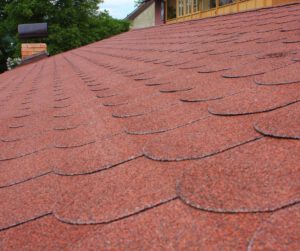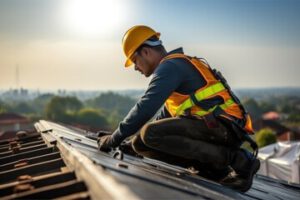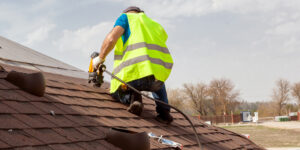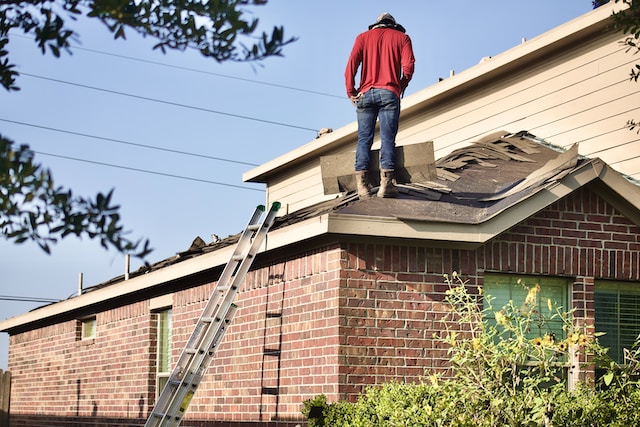West Chester Roofing are tradespeople who specialize in the construction of roofs. They repair and replace the roofs of homes and other buildings using various materials.
Roofers must be comfortable working at heights and following safety protocols. They must also be able to work in unpleasant weather conditions.
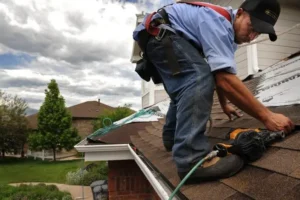
Selling roofs is a sales job; the best roofing salespeople know how to balance logic and emotion in their presentations. They help homeowners understand the value of a new roof and how it can save them money in the long run. They also encourage prospects to compare prices and services with other roofing companies. They’re not afraid to negotiate either, but they don’t push customers into a deal they don’t want.
Large roofing companies often employ sales roofers, and they can make a lot of money in the short term by quoting low prices and offering in-house financing. These are a good choice for homeowners who need a new roof and can’t wait for insurance compensation or their funds to pay for it. They may require a lengthy sales presentation and ask that all decision-makers be present to make the sale.
Small roofing businesses typically use a more traditional approach to sales. They hire a few crews and may take on several projects at once. These roofers often have a strong reputation and may advertise in local publications or on the radio. They may also network at community events to get referrals from current customers. They’re not as able to turn prospects into paying customers, but they can still succeed in the roofing business.
Some homeowners will not buy a roof even if they need one, especially if they’re worried about insurance costs or the upfront cost. You can encourage them to move forward with their project by explaining how your company makes the process as easy as possible and describing what sets you apart from other roofing companies.
Homeowners reluctant to purchase a new roof may say they must check with their partner or are unsure if the damage is severe enough for an insurance claim. You can counter this by asking them to schedule time with their partner now or inviting them back for a sales presentation with both partners present. Having all the decision-makers in the room can help them move forward with the sale, preventing potential buyers from experiencing buyer’s remorse later.
The roof is a vital part of any home, and it’s important to watch for signs that it’s time to replace or repair it. If you’re unsure whether your roof needs replacing, a professional roofer can inspect it and help you decide.
Roofing is a labor-intensive job that requires extensive knowledge of roofing materials and installation techniques. It is also a dangerous occupation. Falling from roofs is one of the most common causes of death in the construction industry. Fortunately, some safety measures can be taken to reduce the risk of falling off a roof. These measures include using safety harnesses, wearing safety glasses and helmets, and following all other onsite safety policies.
A service roofer performs a variety of jobs, including repair and replacement of existing roofs and new roof installation. They may also repair leaks and install gutter systems and insulation. Roofers can also install solar panels and other energy-efficient features.
The most common roofing material is asphalt shingles, which last about 20-25 years before they need to be replaced. If your shingles are past their lifespan or experiencing other symptoms of a failing roof, contact a service roofer for a free estimate.
Local roofers are more attuned to local regulations and building codes. In the long run, this can save you money, as they are less likely to make mistakes that could result in costly fines from local authorities. In addition, they are more likely to know which roofing products will be best for your climate and local aesthetic.
Retail sales roofers are larger companies that do regular roofing and storm damage repair (more on that type of roofer below). They’re also more likely to offer in-house financing or zero-percent interest rates. You can usually schedule a sales presentation with this type of roofer online, and they’ll have a project manager who will be onsite all day to answer questions and interface with the crew. You’ll typically be able to reach them by phone as well.
Storm chasers seek out and follow severe weather, especially tornadoes. They are motivated by various reasons, including scientific research, personal interest, thrill-seeking, and photography/videography. Some also work with news outlets and provide safety reporting during storms. Historically, storm chasing was a solo endeavor; however, the advent of internet-based meteorological monitoring and mobile Doppler radar systems have allowed for group tracking operations.
Many chasers have a background in science or engineering and are familiar with meteorology, physics, mathematics, and computer science. They often spend significant time learning how to read weather maps, interpret weather data, and use Doppler radar. Using these tools, they can accurately predict where severe weather will occur, then drive to the location and intercept the storm. They may also collaborate with others on large field projects or work for a meteorological service to learn about storm structure and dynamics, tornadoes, hail, lightning, and other extreme weather.
In addition to their vehicles, many chasers also have a collection of cameras, video recording equipment, and portable meteorological testing equipment. They typically wear rain gear and a harness when observing storms from the roadside or a safe distance.
They use radio scanners to listen in on emergency services and other storm spotters, which can help them stay abreast of the status of a developing storm. They frequently travel with food, water, and emergency supplies if stranded for an extended period during a chase. Some also carry GPS devices, which can be used with local weather stations to plot storm positions on a map.
Aside from their vehicles, chasers usually have an arsenal of tools for various purposes, such as roofing shovels and pry bars to remove old roofing systems and hammers, drills, nails, ladders, knives, pavers, tape measures, and framing squares to install new roofs. They also use a variety of software programs to plan, record, and analyze data, including GPS tracking, augmented reality mapping, Doppler radar, and meteorological satellite imaging. Lastly, they sometimes apply rain repellents and other products to their vehicles to protect them from moisture, mud, dirt, and other debris.
When hiring a roofer, you must ensure the contractor you choose is trustworthy and experienced. This will help to ensure that your new roof or repair is installed properly and that you are not scammed or charged for services that were not necessary. While searching for the right roofing contractors, requesting quotes from multiple companies and comparing their prices and qualifications is helpful. Then, you can select the best local roofer for your project.
In addition to being trustworthy, local roofers are more likely to respond to your questions quickly and provide detailed written estimates that outline the scope of work and costs for all services. They can also provide references and testimonials from local homeowners who have previously worked with them. Additionally, local roofers are familiar with the specifics of local building codes and can install residential roofing systems to meet those requirements.
When choosing a roofing contractor, it is important to ensure they are licensed and insured. While most roofers have a general liability insurance policy, hiring a roofer with additional coverage for property damage or personal injury is helpful. This will protect you from liability in an accident while the roofer is on your property.
Another benefit of working with a local roofer is that they will be around to address any problems that may arise after your roof installation or repair. While storm chasers and out-of-town contractors often disappear after the job is done, local roofers are incentivized to perform a quality installation, build long-term relationships with their customers, and support the local community.
If you need a residential roofing repair or replacement:
- Contact one of the top-rated local roofers today.
- Answer a few quick questions about your home project and get matched with up to 4 local pros.
- Compare quotes, reviews, and profiles to find the best contractor.
It’s fast, easy, and free!
